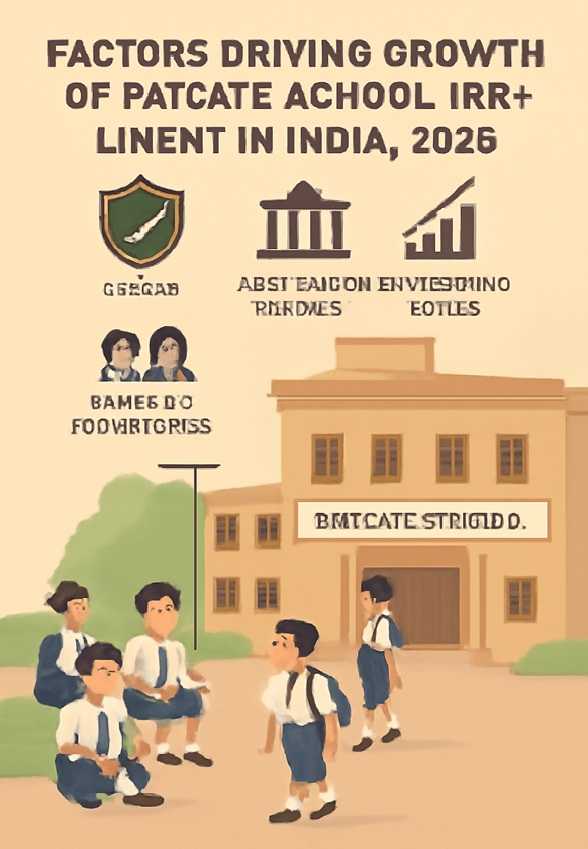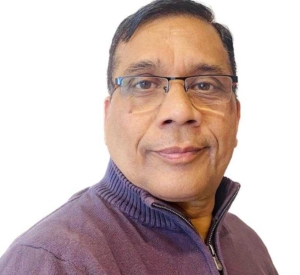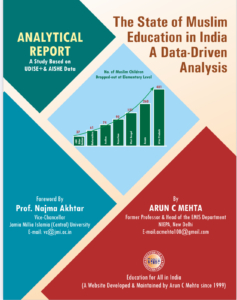Factors Driving the Growth of Private School Enrollment in India, 2020–2025: A Data-Driven Analysis
Abstract
Between 2020 and 2025, private school enrollment in India has seen significant growth, while government school enrolment has declined. This shift is driven by a combination of socio-economic, educational, and policy-related factors. Using data from the Unified District Information System for Education Plus (UDISE+) and other authoritative sources, this article examines the key drivers of private school growth, including perceived quality, rising incomes, urbanization, and public school inadequacies. It also presents tabulated data to highlight trends in enrollment, school numbers, and dropout rates. The analysis concludes with implications for educational equity and policy recommendations to align with the National Education Policy (NEP) 2020 goals.
Historically, enrolment in private schools was low, but the number of students who studied improved significantly. Recent UDISE data suggest that it reached a peak but the recent data from 2020-21 to 2023-24 show a slight decline, contrary to which enrolment in government schools, with ups and downs, increased during the same period.
Delhi’s Private School Fee Regulation Bill: A Step Toward Transparency or Overreach?
Introduction
India’s education system is undergoing a transformative shift, with private school enrollment rising steadily from 2020 to 2025, while government schools have experienced a decline. According to UDISE+ data, total school enrollment dropped from 25.17 crore in 2022–23 to 24.80 crore in 2023–24, with a notable shift toward private institutions, particularly in urban areas where 43.8% of primary students now attend private schools compared to 36.5% in government schools (ASER, 2024). This article explores the factors fuelling this trend, supported by quantitative data and visualizations, and discusses the implications for achieving universal education by 2030, as envisioned by NEP 2020.
Factors Influencing Private School Growth
1. Perceived Quality of Education
Parents increasingly perceive private schools as offering superior education quality, modern infrastructure, and English-medium instruction, which align with aspirations for competitive exam success and global opportunities. Private schools often maintain lower pupil-teacher ratios (PTR), averaging 20:1 compared to PTR in government schools. This perception, though not always supported by empirical evidence on learning outcomes, drives enrollment (Kingdon, 2020). However, in the recent past, due to Samagra/Sarva Shiksha initiative PTR across educational levels improved significantly.
2. Rising Household Income and Aspirations
Economic growth has expanded India’s middle class, enabling more families to afford private school fees. The National Sample Survey (2023) reports a rise in disposable incomes, with education viewed as a key investment for social mobility. Parental aspirations for global competitiveness further fuel this trend (Desai et al., 2022).
3. Accessibility and Proliferation of Private Schools
The number of private schools, particularly affordable ones, has grown by approximately 15% in urban and peri-urban areas from 2020 to 2025 (Ministry of Education, 2024). Relaxed regulations in some states have facilitated this expansion, making private schools more accessible.
4. Inadequacies in Government Schools
Government schools face persistent challenges, including teacher shortages, absenteeism, and poor infrastructure. UDISE+ data for 2023–24 indicates a primary-level dropout rate of 1.9%, reflecting dissatisfaction with public education (Mehta, 2025). Data cleansing efforts have also revealed inflated government school enrollment figures, exposing lower actual enrolment (UDISE+ Report, 2023–24). The closing, merging and demerging of schools in the recent past, has also affected availability of schools as per the RTE norms but details of the same are not available in the public domain.
5. Urbanization and Demographic Shifts
Urbanization has increased the concentration of private schools in cities, where families prefer them for perceived quality and prestige. Rural-to-urban migration further amplifies this trend, with private schools catering to 43.8% of urban primary students (ASER, 2024).
6. Parental Perceptions and Social Factors
Social prestige, discipline, and networking opportunities associated with private schools influence parental choices, often irrespective of actual academic outcomes (Srivastava, 2021). Peer influence and middle-class norms further drive this preference.
7. Favourable Regulatory and Investment Environment
Policies allowing 100% foreign direct investment (FDI) in education and reduced bureaucratic hurdles have spurred private school growth. Private equity investments have risen, supporting the expansion of school chains (EY, 2024).
8. Policy Attention and Accountability
Private schools face stricter accountability pressures from parents, unlike government schools, which often suffer from bureaucratic inefficiencies. This responsiveness enhances their appeal (Muralidharan & Sundararaman, 2022).
Data Analysis
The following tables and charts, derived from UDISE+ and other sources, illustrate key trends in school enrollment, number of schools, and dropout rates, highlighting the shift toward private education.
Table 1: Gross Enrollment Ratio (GER) Trends in India, 2012–13 to 2022–23
| Year | Primary (I–V) | Upper Primary (VI–VIII) | Secondary (IX–X) | Higher Secondary (XI–XII) |
|---|---|---|---|---|
| 2012–13 | 104.8% | 89.3% | 73.6% | 50.1% |
| 2016–17 | 100.1% | 90.7% | 78.5% | 54.2% |
| 2020–21 | 103.3% | 92.2% | 79.8% | 53.8% |
| 2021–22 | 103.4% | 100.1% | 79.6% | 57.6% |
| 2022–23 | 96.2% | 93.9% | 79.2% | 56.8% |
| 2023–24 | 93.0% | 91.7% | 77.4% | 56.2% |
Source: UDISE+ Reports, 2020–21 to 2023–24, educationforallinindia.com
Table 2: Number of Schools in India, 2020–21 to 2023–24
| Year | Government Schools | Private Unaided Schools | Total Schools |
|---|---|---|---|
| 2020–21 | 1,032,179 | 343,314 | 1,509,136 |
| 2021–22 | 1,022,386 | 335,844 | 1,489,115 |
| 2022–23 | 1,016,010 | 323,430 | 1,466,109 |
| 2023–24 | 1,017,660 | 331,108 | 1,471,891 |
Source: UDISE+ Reports, 2020–21 to 2023–24, educationforallinindia.com
Table 3: Dropout Rates at Secondary Level (Grades IX–X), 2020–21 to 2023–24
| Year | Boys (%) | Girls (%) | Overall (%) |
|---|---|---|---|
| 2020–21 | 13.5 | 12.3 | 14.6 |
| 2021–22 | 13.0 | 12.3 | 12.6 |
| 2022–23 | 14.5 | 13.5 | 16.4 |
| 2023–24 | 14.3 | 13.9 | 14.1 |
Source: UDISE+ Reports, 2020–21 to 2023–24, educationforallinindia.com
Table 4: Primary Enrollment Trends by Management, 2020–21 to 2023–24
| Year | Government (in millions), Total I to XII | Private Unaided (in millions), Total I to XII | Total (in millions), primary |
|---|---|---|---|
| 2020–21 | 132.4 | 88.1 | 253.8 |
| 2021–22 | 140.5 | 82.5 | 255.7 |
| 2022–23 | 136.2 | 85.2 | 241.6 |
| 2023–24 | 124.3 | 80.9 | 235.0 |
Source: UDISE+ Reports, 2020–21 to 2023–24, educationforallinindia.com
Discussion
The data reveals a clear shift toward private schools, driven by parental perceptions of quality, economic growth, and public school shortcomings. The GER chart shows stable primary enrollment but a decline in higher secondary GER, reflecting retention challenges. The enrollment chart highlights a growing preference for private schools, with a significant increase in private primary enrollment, while government school enrollment dropped. High secondary dropout rates (14.1% in 2023–24) indicate systemic issues that push parents toward private alternatives. However, the growth of private schools raises equity concerns, as low-income families may struggle to afford fees, and quality varies widely among private institutions (Kingdon, 2020).
Implications and Policy Recommendations
The rise of private schools underscores the need for public education reforms to address teacher shortages, infrastructure deficits, and accountability issues. NEP 2020’s goal of universal education by 2030 requires targeted interventions, such as:
- Strengthening Public Schools: Invest in teacher training, reduce PTR, and improve facilities to restore parental confidence.
- Regulating Private Schools: Enforce quality standards to ensure consistent learning outcomes across private institutions.
- Addressing Equity: Expand scholarships and subsidies to make private education accessible to marginalized groups.
- Data Accuracy: Enhance UDISE+ methodologies to address inconsistencies, such as using common schools for dropout calculations (Mehta, 2025).
Concluding Observations
The growth of private school enrollment in India from 2020 to 2025 reflects parental demand for quality education, economic growth, and systemic public school challenges. While private schools fill critical gaps, their rise risks widening educational disparities. However, the same is declined from a total of 88.1 million in 2020-21 to 80.9 million in 2023-24. Policymakers must strengthen public education and regulate private institutions to achieve NEP 2020’s vision of universal, equitable education by 2030.
Suggested Readings
- ASER. (2024). Annual Status of Education Report 2024. New Delhi: Pratham.
- Desai, S., et al. (2022). Education and Social Mobility in India. Economic & Political Weekly, 57(12), 45–53.
- EY. (2024). Private Equity in Indian Education: Trends and Opportunities. Mumbai: Ernst & Young.
- Kingdon, G. G. (2020). The Private Schooling Phenomenon in India: A Review. Journal of Development Studies, 56(10), 1795–1817.
- Mehta, A. C. (2025). UDISE+ 2023–24: Insights and Perspectives. Retrieved from https://educationforallinindia.com
- MHRD. (2023). Educational Statistics at a Glance. New Delhi: Ministry of Human Resource Development.
- Ministry of Education. (2024). UDISE+ Reports 2020–21 to 2023–24. Retrieved from https://educationforallinindia.com
- Muralidharan, K., & Kremer, M. (2021). Private Schools in Developing Countries: Evidence and Implications. American Economic Review, 111(3), 831–864.
- Muralidharan, K., & Sundararaman, V. (2022). The Impact of Accountability on Educational Outcomes. Journal of Public Economics, 205, 104567.
- Srivastava, P. (2021). Low-Fee Private Schools: A Study of Parental Choice. Comparative Education Review, 65(4), 623–645.
Published on Education for All in India | © 2025



